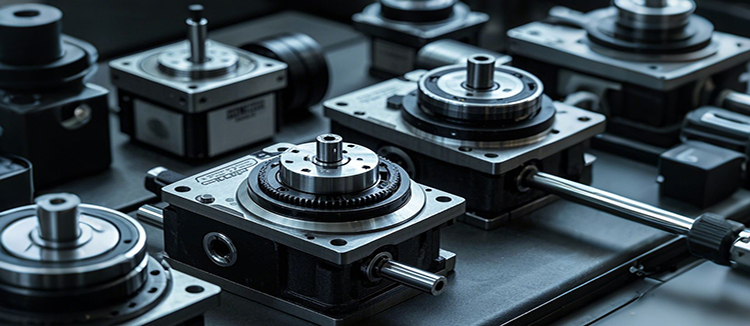Understanding the Role and Benefits of Harmonic Reducer in Industrial Applications
When it comes to precision engineering and motion control, the Harmonic Reducer stands out as a critical component in various industrial applications. This sophisticated device is designed to reduce speed and increase torque, making it an indispensable part of systems that require high precision and efficiency. In this article, we will delve into the intricacies of the Harmonic Reducer, its role in industrial settings, and the benefits it offers to engineers and manufacturers alike.
The Harmonic Reducer, also known as a harmonic drive, is a type of mechanical transmission that uses an elliptical gear to achieve a high gear ratio in a compact and lightweight package. It is widely recognized for its high torque density, backlash-free operation, and long life span, which are crucial in applications where precision and reliability are paramount. The unique design of the Harmonic Reducer allows it to provide a smooth and continuous rotation, which is essential in robotics, aerospace, and automation industries.
One of the primary roles of the Harmonic Reducer is to convert high-speed, low-torque input into low-speed, high-torque output. This is particularly useful in applications where high precision and control are required, such as in the positioning of machine tools or the operation of robotic arms. The reducer's ability to maintain a constant velocity ratio under varying loads is a testament to its robustness and adaptability in dynamic environments.

The benefits of using a Harmonic Reducer are manifold. Firstly, its compact design allows for space-saving integration into tight spaces, which is a significant advantage in industries where space is at a premium. Secondly, the high precision of the Harmonic Reducer ensures that the output is consistent and reliable, reducing the need for additional error correction mechanisms. This precision is achieved through the use of a wave generator that deforms the flexible spline, causing it to engage with the elliptical gear at specific points, thus transferring the motion with minimal backlash.
Another benefit of the Harmonic Reducer is its efficiency. With efficiencies reaching up to 90%, these reducers minimize energy loss, which is not only cost-effective but also environmentally friendly. The low heat generation associated with the Harmonic Reducer also contributes to its longevity, as it reduces the wear and tear on the components, leading to a longer service life and reduced maintenance costs.

In terms of applications, the Harmonic Reducer is used in a wide range of industries. In the field of robotics, it is used to control the movement of robotic arms with high precision, ensuring that tasks are performed with accuracy and repeatability. In the aerospace industry, it is utilized in satellite positioning systems and spacecraft navigation, where the need for precision is critical. In automation, the Harmonic Reducer is employed in conveyor systems and precision assembly lines, where consistent and reliable motion control is essential.
Maintenance of the Harmonic Reducer is relatively straightforward, thanks to its simple design and the absence of complex gearing systems. Regular lubrication and inspection are the primary maintenance tasks, which can be easily performed by trained personnel. This ease of maintenance contributes to the overall cost-effectiveness of using a Harmonic Reducer in industrial settings.

In conclusion, the Harmonic Reducer is a versatile and efficient component that plays a vital role in various industrial applications. Its ability to provide high torque at low speeds, coupled with its precision and reliability, makes it an ideal choice for engineers looking to enhance the performance of their systems. As technology continues to advance, the demand for Harmonic Reducers is expected to grow, further solidifying their importance in the world of precision engineering.










